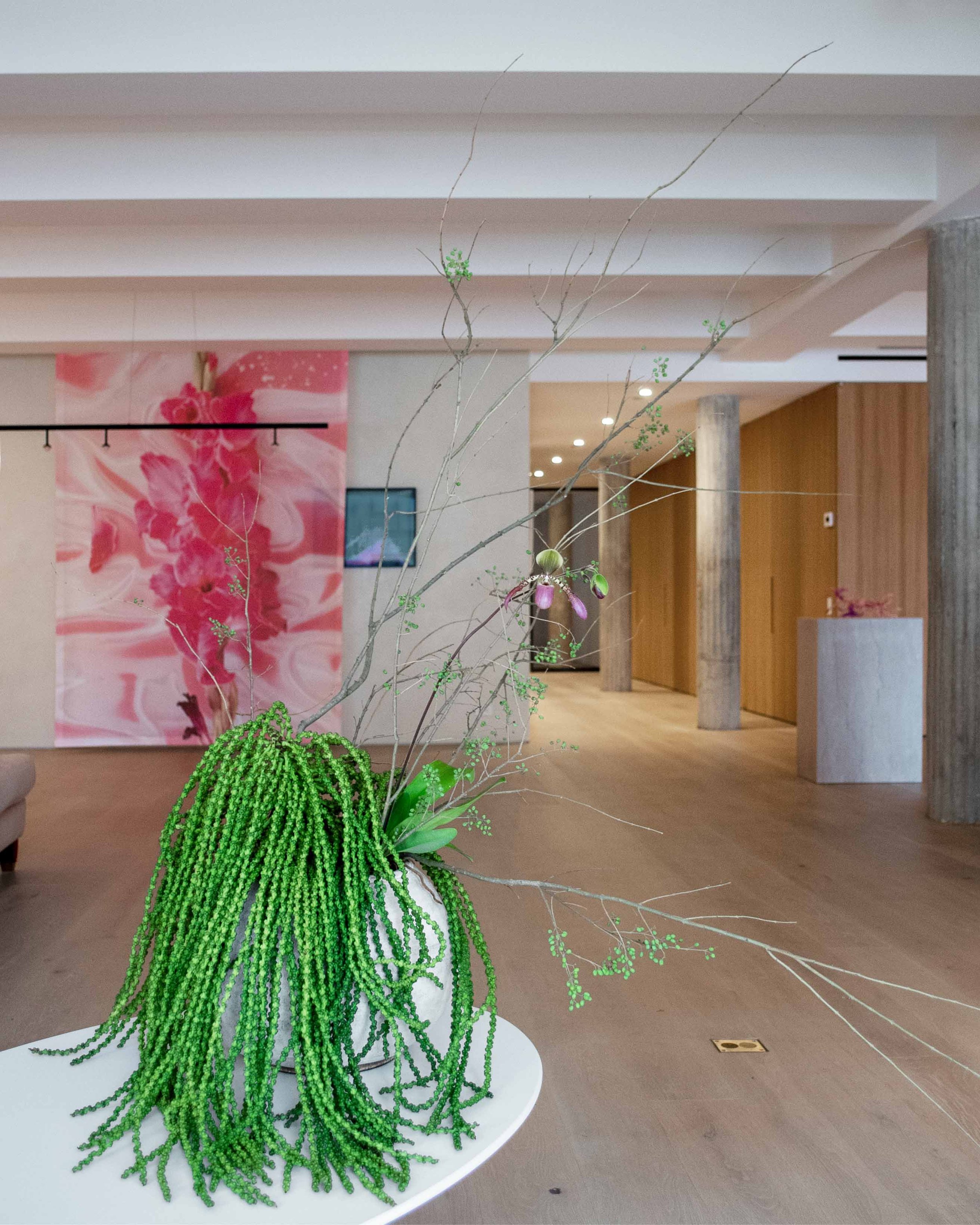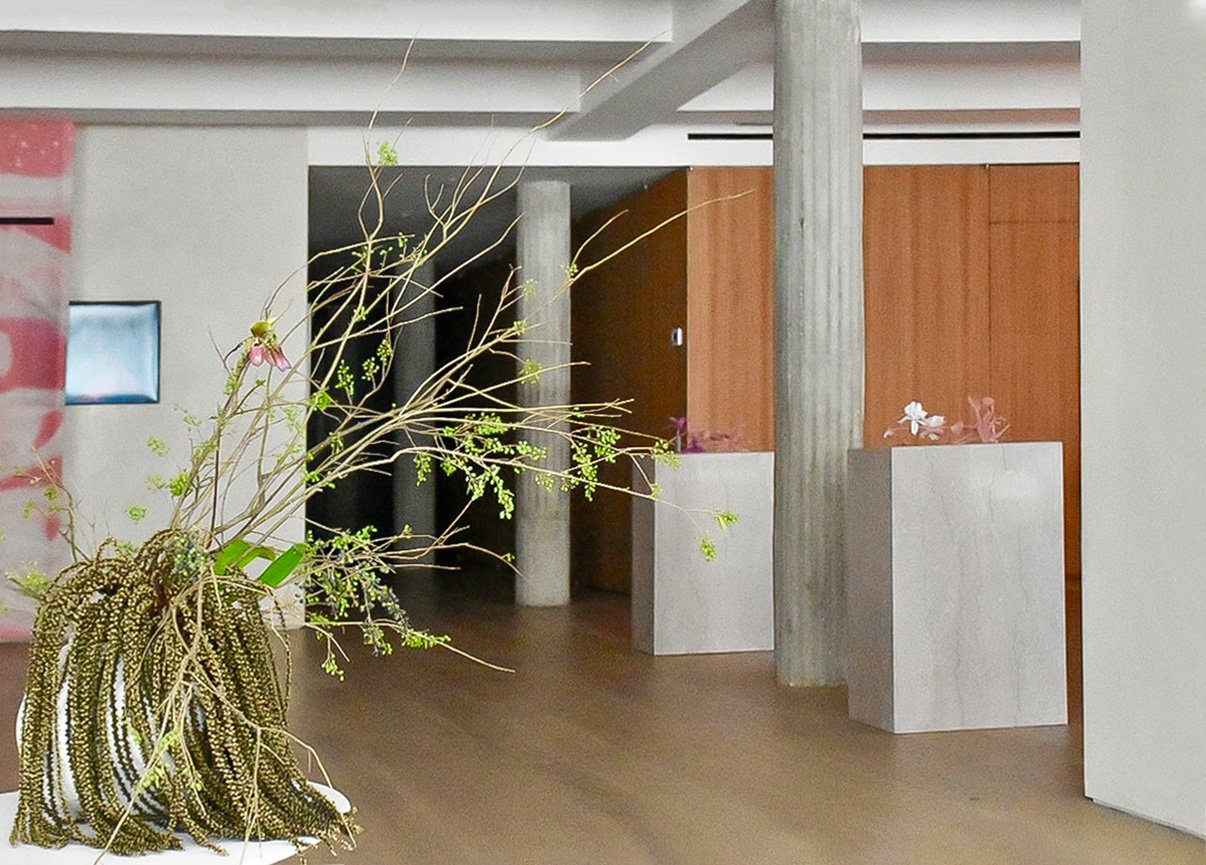‘Delicate Nature’ Fall 2022
October 23-November 21, 2022, Greenwich Street, New York City, selected by Kristen Coy
‘Delicate Nature’ featuring works by
Rey Akdogan (Miguel Abreu Gallery, New York)
Sarah Charlesworth (Paula Cooper Gallery, New York)
Keith Edmier (Petzel Gallery, New York)
Faith Wilding (Bortolami Gallery, New York)
Shirine Gill (Shirine Gill Studio, New York)
Minjae Kim (Marta Gallery, Los Angeles)
Marius Glauer (Studio Marius Glauer, Berlin)
Rocío Ines Marsyas (RIMA studios, New York)
Rana Kim (Rana Flora, New York)
photos Alen Smith & Trinity Lacayo
Music score Mix by Nefeli Brandhorst (AN Studio, Amsterdam/Munich)
“Nature requires no directions, it is organic, fluid and balanced. Today, we have less and less access to untouched nature. So much of our world is consumed by technology, it seems that even when we are among nature, the environment is not completely natural. In fact, the environments we exist in act as artificial reproductions of nature. Much like Joris-Karl Huysmans examines in his 1884 novel À rebours, there is often an illusion of a return to a natural state, yet in reality, this is explicit artificiality. “These plants are really astounding, he said to himself, stepping back to appraise the entire collection. Yes, his object had been achieved: not one of them looked real; it was as if cloth, paper, porcelain, and metal had been lent by man to Nature to enable her to create these monstrosities (Huysmans, p. 101).” This curatorial features works that present an illusion of nature, but also highlight its fragility. Art owes its origin to Nature herself.” (Kristen Coy, curator, Sept 2022)
Invitation of ‘Delicate Nature’ Designed by Iou.D. Studio
‘Delicate Nature’ is curated by Kristen Coy. She holds a B.A. from New York University Gallatin School of Individualized Study where her concentration was titled “The Consumption and Commodification of Art.” Kristen’s interests are focused on the cultural/societal meaning and representation of art objects as well as its relationship to psychoanalysis. In the spring of 2019, Kristen published “The Rebirth of the Dandy as an Art Collector,” which analyzes the treatment of art as a commodity. Kristen is continuing her studies at the Institute of Fine Arts at New York University as an M.A. candidate. Kristen has work experience at Salon 94 Gallery in New York, the Institute of Contemporary Art, Miami and Christie’s Auction House, New York.
‘Delicate Nature’ is the third exhibition at the Venetia Initiatives and will be shown by appointment on Sundays and Mondays 11-7 pm at the Greenwich Street residence. The curator will be on-site during these days. Please contact krisnicolecoy@gmail.com and venetia@venetiakapernekas.com to reserve a time slot.
Sarah Charlesworth (1947-2013, U.S.A.) is known for her conceptual and aesthetically stimulating photo-based works. As one of the most revered artists of the Pictures Generation, her art reflects the culture in which it was made, but also feels very contemporary. In speaking of her process, Sarah once said, “I think of myself as a robber, I plunder and pillage on paper… I possess these things and give them my own meaning.” Working in this ‘ready-made’ mindset, Charlesworth’s images focus on a singular subject that is enlarged and placed on a monochromatic backdrop. In “Homage to Nature” Sarah’s subject is a miniature tree, enclosed in a glass bell jar set against a velvety, emerald background (The Estate of Sarah Charlesworth is represented by Paula Cooper Gallery, New York).
Faith Wilding (British b. 1943, Paraguay) has vastly contributed to the discussion of both feminism and environmentalism in her artistic practice. Born during the height of World War II, Faith’s family fled from Europe to the Bruderhof Anabaptist Commune in Paraguay. As a child, Faith was engulfed in the natural world, studying Paraguay’s forests and waterways– spaces that are now much different due to deforestation and mono-cropping. In this secluded upbringing, Wilding gained an appreciation for the arts and also realized her desire to resist against the commune’s strictly defined gender roles. Entering her 8th decade of life, Wilding’s materials and methods combine scientific illustration with illuminated manuscripts. Wilding handles her subjects in a fascinating way, she is able to render the articulate textures of flora through the medium of graphite. (Bortolami Gallery, New York, at 55 Walker Street, “Being Like Leaves” on view through October 29, 2022).
Keith Edmier (b. 1967, U.S.A.) blends cultural and autobiographical references to create sculptural forms. In his series of cast sculptures of orchids, First Lady Cattleyas (2015), each flower is a life-cast of a hybrid Cattleya orchid that had been bred in honor of a First Lady (a long-standing tradition since 1929).
For ‘Delicate Nature’ “Laura Bush” and “Michelle Obama” coexist; the two orchids, acting as surrogates of the First Ladies’ bodies, are cast from live orchids using silicone molds and dental acrylic. Keith’s usage of the dental acrylic marks the florals with a type of artificiality, he does not want the flowers to necessarily look real. (Keith Edmier is represented by Petzel Gallery, New York).
Shirine Gill’s (b. 1947, Iran) intuitive process pushes her towards repetition, causing her to photograph the same subject hundreds of times. For “Winterreise No. 1” and “Winterreise No. 2,” Shirine bought a bouquet of flowers, which she then took to the darkroom, exposing them on photographic paper. The results are these photograms that capture the delicacy of the flowers, but also give them an x-ray quality. (Studio Shirine Gill, New York)
Rana Kim (b. 1978, Korea) creates live floral installations that challenge the distinction between living nature and sculptural forms. Everyday, Rana arrives at the New York floral market at 5 am. Watching the vendors set-up, she peeks into their boxes and decides which materials she will take home that day. Rana’s approach to floral work is very sculptural, but is also dependent on space/environment.
For ‘Delicate Nature,’ Rana knew she wanted to create an installation that included greenery, grass and leaves; something that could bring live nature into the setting. (Rana Flora, New York)
Rey Akdogan (b. 1974, Germany) is interested in the materiality of atmospheres and how they can be taken apart. Her work is momentary, ephemeral and pertinent to a much larger system. Rey’s work teases out larger conventions by bringing colloquial materials into her artistic practice. In these slide works, no photographic processes were used; the individual frames are assembled from layers of lighting gels, light diffusers, correction gels and commercial packing plastic. Each carousel is composed of sequences that explore a surface constraint, or material limitation, found within the film and packing materials. In addition to the materials listed above, the materials used making the slides for Carousel #2 are plastic colored packing material for lemons and oranges, which are typically employed to enhance colors of produce in supermarket settings. (Rey Akdogan is represented by Miguel Abreu Gallery, New York).
Marius Glauer (b. 1983, Norway) is interested in the intersection between sculpture, photography and installation works. His artistic creations blur the lines between high and low, abstract and concrete, organic and digital, serious and ironic, sexy and obscene. Glauer plays with the boundaries of the medium of photography, often questioning the threshold between digital photography and sculpture. Glauer prefers working with uncommon materials: Fabric with bizarre patterns, everyday objects such as bags, flowers, office supplies, wrapping material and a variety of lenticular foil. For ‘Delicate Nature,’ Marius created a vinyl mesh version of his Pink Foil Flower, which both conceals and reveals Tete Rose, a unique c-print from 2019. (Marius Glauer Studio, Berlin).
Minjae Kim’s (b. 1989, Korea) background in architecture and furniture design informs his practice of creating simple, idiosyncratic and often emotionally charged furniture and objects. In his studio in East Williamsburg, New York, Minjae primarily works with hand-carved wood, fiberglass and lacquer. Minjae’s Ikebana light is both incredibly functional and decorative, incorporating ceramic, brass, resin and Baroque pearl. This light subverts normative associations by allowing the option to house water and live florals in the base of the lamp. Minjae Kim Studio, New York. (Minjae Kim is represented by Marta Gallery, Los Angeles)
Rocío Ines Marsyas (U.S.A.) creates focused, articulate metal sculptures and functional jewelry objects that have an entire life of their own. Mur, ciel, ago–– Earlier than the present time, is a solid 24-karat gold bat based on a still life pencil drawing the artist made in El Salvador in 2005. A friend gifted Rocío a tiny, juvenile dead bat that perished in the fumigation of an art center meant only to kill insect vermin. Rocío sat down to draw her subject, and in the 30 minutes it took her to draw it, she noticed it perceptibly changing. Its delicate membrane wings shriveled, causing the small beast to reposition itself slightly through the process of decomposition. Rocío recalls this compelling experience as strange and wonderful… This act of slow looking and intense drawing allowed her to appreciate this otherwise imperceptible movement and consider drawing as a time based medium. This is the artist’s first foray into an extended investigation and execution of a solid pure gold object combining multiple ancient techniques including: repoussé/hand chasing, gold fusion without the use of solder and lost wax casting. Rocío aims to continue exploring the possibilities for solid 24k gold, especially in sheet form, as an extended metaphor for the memento mori genre.
















